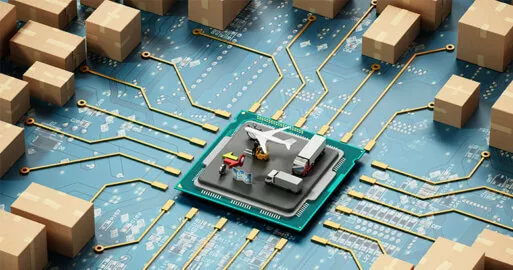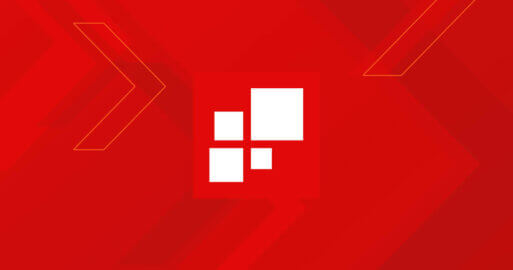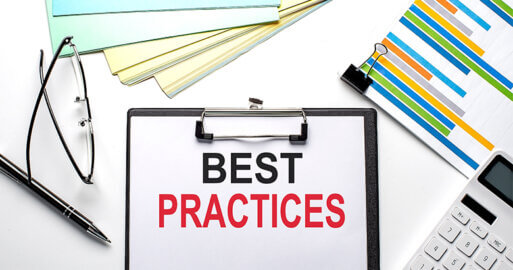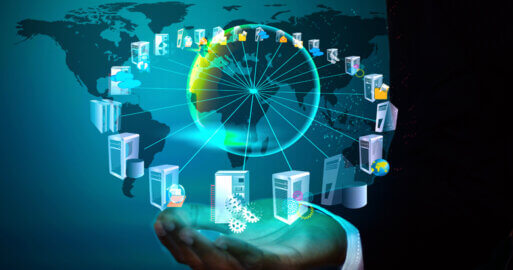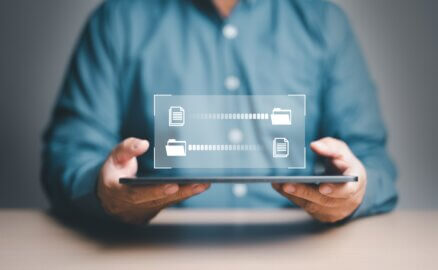EDI Modernization and Beyond — Introducing a Modern Integration Landscape

In our first blog post on EDI modernization, you can read in detail about the importance of EDI in the history of the automotive industry and how it has evolved in the wake of digitalization. There are numerous benefits for companies: from the modernization of outdated EDI technology and the application of modern trends such as cloud and API integration, all the way to the introduction of EDI, the modernization of existing systems or application integration with different technologies. It’s crucial to plan such an initiative carefully, understand the important criteria of a software rollout and develop future-proof roadmaps. In this second part of our series, we now turn our attention to the various challenges involved in modernizing an EDI platform in the course of introducing a modern and comprehensive integration landscape. You’ll get an overview of the project steps from design to go-live based on checklists of the key aspects, and you’ll also learn how SEEBURGER can help you modernize your outdated EDI technology in a future-proof way.
Evaluate your existing EDI infrastructure
So, you’re faced with the challenge of evaluating the modernization of your EDI infrastructure for your company. But before you start planning, first take a close look at the current state of your existing EDI landscape as well as the existing systems and functions. Pay particular attention to the following four aspects:
- Compared to modern integration platforms, older EDI systems often have functional deficiencies and related limitations. These include insufficient real-time processing and transparency, limited integration options, complex cost structures and inadequate partner connectivity. In addition, older EDI systems usually support only a limited range of data formats, such as EDIFACT or ANSI X12, which can be restrictive when dealing with newer data formats and industry-specific standards. Only if your system supports the latest industry standards and formats can you ensure compliance and, above all, data protection at all times.
Therefore, you should evaluate the capabilities of your current EDI system and examine possible limitations in terms of functionality, features and, most importantly, supported data formats. - Interview employees who work with the EDI system specifically about their experiences and suggestions for improvement. Identify weaknesses that should be addressed during the EDI modernization project. Are end users faced with too much manual work and complex maintenance? Is compliance becoming an increasing challenge? In order to improve the efficiency, accuracy and agility of your organization’s integration technology through modernization, it’s critical to understand and address these very weaknesses as the project progresses. Change management and your IT staff play an important role in successful project execution.
- Which integration possibilities does your EDI landscape offer? Analyze the extent to which your EDI technology can be integrated with existing business systems such as ERP or CRM. Outdated EDI systems often rely on outdated technologies and unsuitable interfaces, which means they are often not suitable for real-time data exchange. In addition, their adaptability to other systems, new data formats and changing requirements is limited. Although it is theoretically possible to integrate older EDI systems with other systems through specific programming or the use of middleware, in practice this option is extremely complex, costly and time-consuming. There is no doubt that in the mid- to long-term, a migration to modern integration solutions is more efficient and sustainable.
- When evaluating an EDI platform, you should also consider scalability. Is your existing EDI landscape capable of flexibly adapting to a dynamic environment? In other words, can it easily scale according to increasing or decreasing workloads?
Define goals and requirements for EDI modernization
Now that you have assessed your existing EDI technology and identified its capabilities and integration opportunities, it’s time to define clear goals and requirements for a successful EDI modernization. These will help you select a suitable vendor for your modern EDI solution. Always keep the following in mind:
- Always keep your employees’ feedback in mind and continue to involve all key stakeholders in the EDI modernization project, especially those who will be directly affected by the new EDI system. Actively involve employees from various departments such as IT, finance and customer support. Having already solicited their suggestions during the evaluation process, you can gain insight into what your colleagues expect from the new EDI infrastructure. What are their goals for the project?
- Think global, act global. Generally, large and medium-sized companies are involved in international operations. It is therefore essential that sites and subsidiaries outside the domestic market are also equipped with the new IT infrastructure and integrated into the company-wide IT system to ensure seamless connectivity. Expertise in country-specific laws and regulations is essential for the successful implementation of software in international subsidiaries. To ensure a smooth international software rollout, it is important to familiarize yourself with the challenges and requirements that may arise in this context.
- In addition to strategic and organizational requirements, you will also be faced with the choice between an on-premises installation or an iPaaS solution. Weigh carefully and choose the deployment model that best fits your needs and existing resources. An on-premises installation requires more resources, while iPaaS allows you to easily outsource many tasks to the provider. Such modern cloud services also allow you to better ensure compliance with IT security, business continuity, profitability, time-to-market and sustainability requirements compared to in-house operation.
- Now prioritize your objectives, taking into account their impact, feasibility and potential benefits. Using this kind of target list, you can then define Key Performance Indicators (KPIs) to evaluate the success of the EDI modernization project at a later stage.
- Also consider expanding EDI modernization. Instead of just updating your EDI landscape, consider implementing modern EDI as part of a comprehensive integration landscape. While EDI has its merits and is still essential in many industries — automotive leading the way — deploying a comprehensive integration platform can empower your organization to navigate the changing digital landscape more effectively and efficiently. It allows you to leverage internal and external system applications with EDI on one platform, ensuring you remain competitive and adaptable in a rapidly-changing business environment.
The key reasons for using a comprehensive integration platform instead of stand-alone EDI solutions range from greater flexibility and real-time data exchange to scalability, efficiency, improved partner collaboration and, of course, far-reaching, future-proof integration capabilities. This also allows you to have your individual systems work together more harmoniously, such as with EDI integration via APIs.
Once you know and understand your goals and requirements based on a thorough assessment, it is time to look for modern integration solutions and service providers that can meet and satisfy them.
EDI modernization in action
Once you have found a suitable provider for your ideal EDI solution that addresses your clearly defined goals and requirements, it’s time to develop a hands-on implementation plan. This should take into account critical elements such as data migration, integration with existing systems, testing, collaboration and training needs. There are four aspects that are particularly important:
- Secure migration and transfer of your data from the old system to the new EDI platform is essential to ensure a smooth transition and uninterrupted business operations. Accurate and error-free execution of the migration ensures that no data is lost, but arrives correctly and unchanged in the new system, where it can be processed as usual. This means that, ideally, your end users will not even notice that they are working on a new system.
- If you now extend the EDI modernization to the introduction of an integration landscape, it makes sense to seamlessly connect your EDI system with other internal systems such as ERP, CRM and warehouse management systems. This allows all systems to work together smoothly and automate. Using middleware or integration platforms such as the SEEBURGER BIS Platform significantly facilitates EDI integration through its mapping capabilities, data conversion and workflow automation.
- After the implementation of each process, it is important to test the data exchange, data transformation and system integration to ensure that all processes work smoothly. All integrations and EDI processes are set up in a realistic environment and the parameters are tested accordingly.
- For a successful transition, it is important to continue to work closely with your partners and other stakeholders. In the test phase, the previously defined testing schedules and reference data are tested in depth with the connected trading partners. This phase follows an iterative process of verifying whether adjustments to the process or the integration solution are required. The results of the test runs in turn lead to adjustments in the definition and documentation of the overall system. Finally, this process ends with system approval and changes from the test system to the production system.
- In addition to coordinating the EDI modernization with each external partner from testing to go-live, it is equally essential to provide your internal teams with training and educational opportunities on how to use and manage the new EDI infrastructure so that they can effectively use the new system and its features. Project experience has shown that after a two-month live operation, it is advisable to conduct a downstream training session for key users, administrators and end users. This provides an opportunity to clarify open questions and resolve any application problems, so that users can further develop their skills and make the most of the full potential of the modernized EDI system.
Continuously improve your modern integration system
After a successful implementation, test phase and go-live of your modernized integration technology based on a solid modernization roadmap with clear goals and objectives, it is necessary to implement an effective monitoring system. This is the only way to monitor the performance of your new integration system and assess whether your goals have been met or further improvements are needed. Through continuous monitoring, potential bottlenecks, errors or optimization opportunities can be identified and addressed at an early stage to ensure smooth and efficient operation of the system. The following three areas are particularly suitable for identifying further optimization potential:
- Compare pre-defined performance metrics with baseline measurements to evaluate the effectiveness of EDI modernization. Keep an eye on critical metrics such as data processing speed, error rates, system availability and response times. Identify bottlenecks or performance issues and take proactive steps to optimize the system.
- Continue to keep your stakeholders actively involved. Gather their insights and suggestions to re-identify potential weaknesses. This valuable feedback will allow you to define areas for further improvement and trigger future developments to better meet user needs. Continuous stakeholder engagement provides you with valuable insights and enables continuous optimization of your EDI system that meets the needs of users and the business.
- Look specifically for areas where you can further automate processes in your integration system. Can manual tasks be replaced or optimized through increased automation? By automating these tasks, you minimize sources of error, increase efficiency and optimize the overall performance of your system to realize its full potential. Through targeted automation, you can use your resources more effectively and focus on strategic tasks.
Therefore, EDI modernization is not a one-time project that is completed after a defined period of time, but a continuous process. The following illustration shows this continuous process of EDI modernization, , which will help you keep up with the latest trends and technological advances.

Figure: The cycle of EDI modernization
How SEEBURGER can help
The SEEBURGER BIS Platform is your central interface for B2B/EDI business processes and offers reliable migration tools for a smooth transition to modern integration landscapes. Our focus is on fast execution and high efficiency to minimize downtime. We guide you from analysis to go-live and provide API integration and secure API management capabilities to connect applications, partners, clouds and data in real time.
As experienced integration experts, we offer you first-class service in our SEEBURGER Cloud. We offer outstanding service levels and convenient access to our extensive collection of over 17,000 maps, of which more than 5,000 are designed specifically for the automotive industry. For application integration (EAI) and SaaS/API integration, leverage our extensive library of connectors. This streamlines the management of partner connections, ERP and API integrations and makes them more independent.
Benefit from a wide range of communication channels, including connections via OFTP2, AS2, SFTP, REST, JSON and more. In addition, you have the option of connecting to our SEEBURGER VAN, supported by our partner DXC. Our Cloud Communication Service also provides direct connections to thousands of business partners, which can be activated at any time.
White Paper
Read more about SEEBURGER B2B/EDI Solutions for innovation along your automotive supply chain.
Download nowThank you for your message
We appreciate your interest in SEEBURGER
Get in contact with us:
Please enter details about your project in the message section so we can direct your inquiry to the right consultant.
Written by: Sandrine Wagner
Sandrine joined our marketing team in August 2021 as an editor and campaign manager. She holds a Bachelor's degree in International Business and brings fundamental expertise in FSI and FinTech to our marketing team through her network engagements, previous internships and student jobs. After her internship at SEEBURGER, she joined our editorial team full-time and has since been involved in writing creative and technical content for our blog and other resources in German and English. Her campaign management work focuses on trends and innovations in various sectors, most notably the financial industry. In her free time, Sandrine enjoys exploring nature with her pets, learning foreign languages and reading literature.
